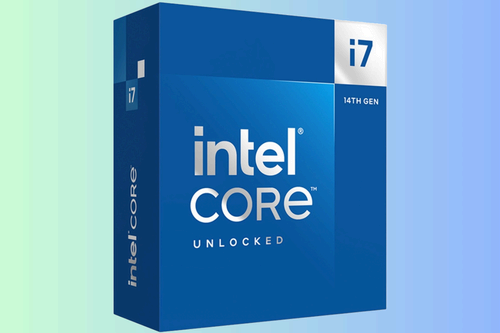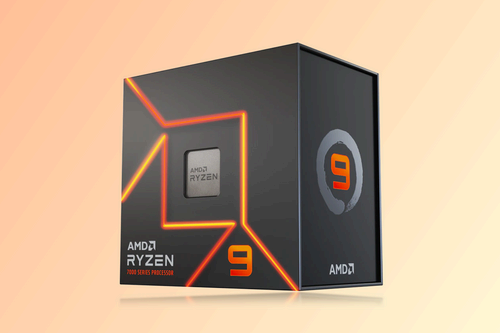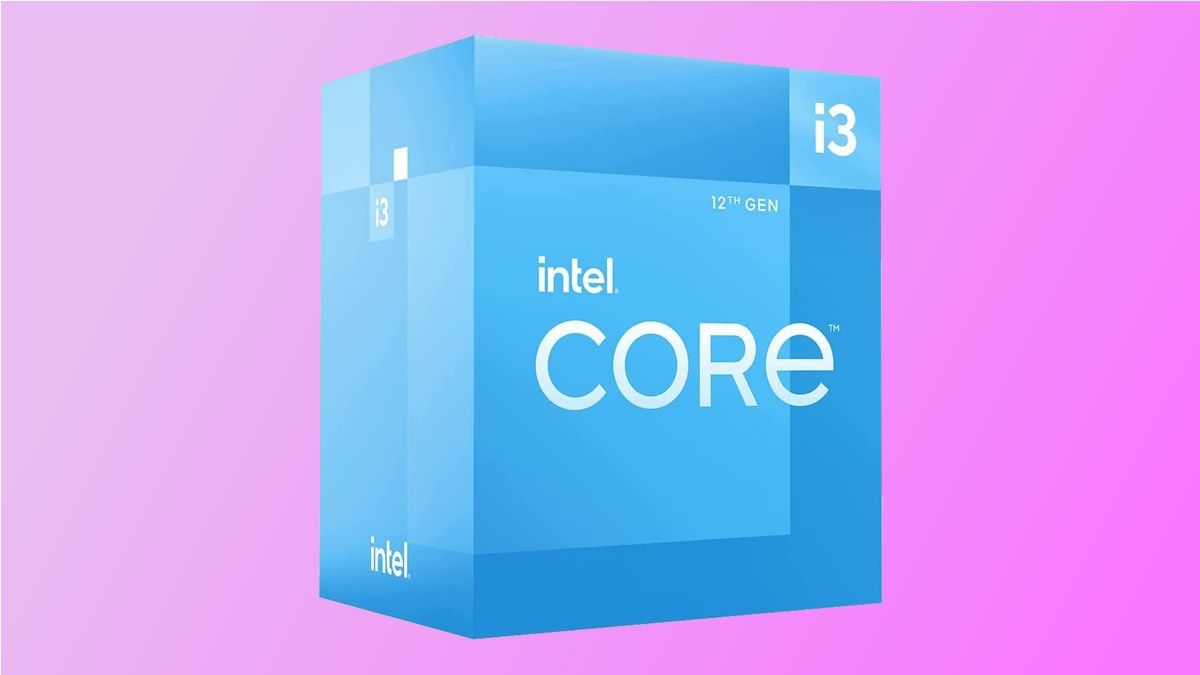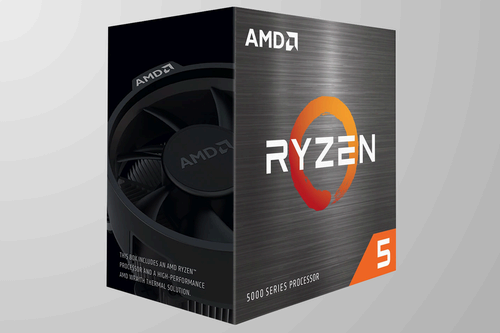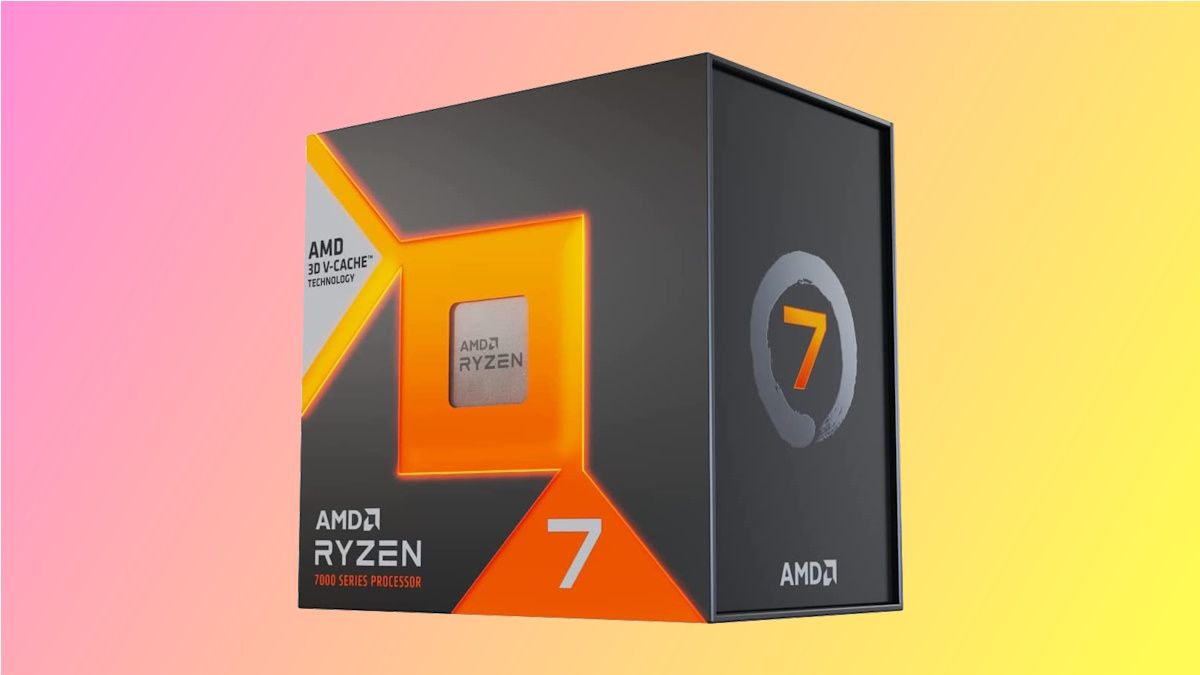The CPU is the cornerstone of every PC build. The best CPUs give you more frames in video games, as long as you have a GPU to match the CPU, and take less time to power through productivity workloads.
UPDATE: 02/07/2024
We’ve updated a variety of our CPU picks with new models. Take a look!
What to Look for in a CPU in 2024
The first thing you should focus on is the number of CPU cores. While some say that more cores is always better, that’s not always true. Remember, the power of the individual core is also important. If it weren’t, ten-year-old 12-core Intel Xeon CPUs would still be better than modern six-core processors.
If you’re a gamer, you can freely ignore the efficiency cores—also known as E cores—found in 12th and 13th gen Intel processors; E cores are not made for gaming and are only worth it in productivity workloads.
Instead, when looking for a gaming CPU, our best budget Intel CPU pick is fast enough for an entry-level gaming rig unless you like to multitask when gaming. A modern six-core CPU is an optimal choice for mid-range builds, while high-end gaming rigs should feature CPUs with eight or more cores.
Also, you don’t usually need flagship CPUs—you’ll pay a ton of cash but won’t get a noticeable performance bump. Most games don’t scale well beyond eight cores and prefer strong single-core performance over exemplary multithreaded prowess. In other words, a modern six or eight-core CPU is enough for most gamers.
Another thing gamers should be aware of is avoiding creating a CPU or GPU bottleneck. While you can have a CPU that surpasses your GPU in gaming performance, pairing a graphics card with a processor incapable of following it will lead to drops in frames per second (FPS), and sometimes even stuttering.
If you’re looking for a CPU for productivity tasks such as video editing, the more you pay, the better performance you can expect. Many productivity apps can use extra cores and hyperthreading, and they scale quite nicely even when we enter the flagship territory. With that said, some workloads, such as audio mixing, prefer single-thread performance.
To summarize, don’t chase flagship CPUs if you’re a gamer. Regarding productivity, most workloads scale pretty well up to sixteen or more cores. There are scenarios, however, where you’d rather have a fast single-thread CPU, such as audio mixing, and where a powerful GPU is more important than a high-end CPU, such as rendering or AI-related workloads.
Don’t forget about motherboard compatibility. If you’re upgrading, your future processor has to be compatible with your motherboard. You should also get a quality CPU cooling solution to allow the new processor to fully spread its wings. An inadequate CPU cooler can lead to thermal throttling, where the processor gets too hot to work at its maximum performance, dropping frequency to cool down itself.
|
How Did We Research |
||
|
Models Evaluated |
Hours Researched |
Reviews Analyzed |
|
26 |
9 |
16 |
How-To Geek’s product recommendations come from the same team of experts that have helped people fix their gadgets over one billion times. We only recommend the best products based on our research and expertise. We never accept payment to endorse or review a product.
Read More »
|
Pros |
Cons |
|---|---|
|
✓ Virtually as fast as the Core i9-14900K in games |
✗ The Core i9-14900K is noticeably faster in some productivity apps |
|
✓ Slightly easier to cool than the Core i9-14900K |
✗ Can use tons of power in heavy multithreaded workloads |
|
✓ Excellent productivity performance |
|
|
✓ Among the top CPUs for gaming |
The Intel Core i7-14700K is a fantastic all-around CPU despite not being Intel’s flagship consumer-grade model. It goes neck-and-neck with the flagship Intel Core i9-14900K in gaming while guzzling less power. In productivity workloads, you can expect less than a 10% difference compared to the Core i9-14900K on average—an outstanding result considering that the Core i7-14700K costs about 30% less and has slightly lower cooling requirements.
The design of the Core i7-14700K includes eight high-power performance cores coupled with 12 efficiency cores, resulting in a 20-core/28-thread design—efficiency cores don’t feature hyper-threading. The former can boost up to 5.6GHz, with the latter reaching up to 4.3GHz, and the CPU requires a decent 240mm or 360mm AIO to spread its wings fully. If you plan on using it exclusively for gaming, you can get by with a quality dual-tower air cooler, like the Thermalright Phantom Spirit 120.
As with the Ryzen 7000 CPUs, the Core i7-14700K can easily reach and surpass 90° Celsius under full load, no matter which cooler you use. More powerful coolers can only allow for slightly higher boost clocks, which won’t translate to significant performance gains. In other words, don’t spend a fortune on a high-end AIO cooler if you plan to use the CPU for heavy productivity workloads; even a mid-range model, such as the ARCTIC Liquid Freezer II 360, will do the trick.
If you’re a gamer looking for a high-end gaming CPU from Intel, the Core i7-13700K might be a better solution. The extra efficiency cores and slightly higher clocks of the Core i7-14700K result in a few extra frames in games, which isn’t justified by the higher price. If you’re a gamer, your best bet is getting either the Intel Core i5-13600K or Intel Core i5-14600K, both of which closely rival the performance of the 13th and 14th gen i7 and i9 models in games, while costing considerably less. Finally, for those of you who don’t care about the price and want the absolute fastest consumer-grade processor from Intel, look no further than the Intel Core i9-14900K.
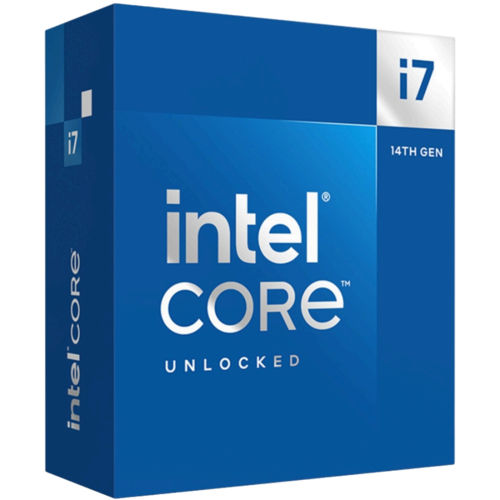

Intel Core i7-14700K
Best Intel CPU Overall
$400 $465 Save $65
The Intel Core i7-14700K is an exceptional all-around CPU, ideal for both gaming and productivity. It’s noticeably more affordable than the Intel Core i9-14900K, while being as fast in games and breathing down the 14900K’s neck in most productivity workloads.
|
Pros |
Cons |
|---|---|
|
✓ Excellent gaming performance |
✗ Expensive |
|
✓ Admirable multithreaded performance |
|
|
✓ Impressive power efficiency |
|
|
✓ Doesn’t require a flagship-level cooler to unleash its full potential |
The AMD Ryzen 9 7950X is the most powerful consumer-grade CPU from AMD. This chip is a beast both when it comes to productivity and gaming workloads. It’s hot on the Intel Core i9-14900K’s heels in most productivity workloads while using considerably less power. When it comes to gaming, the Ryzen 9 7950X is among the best gaming CPUs while staying below or slightly above 100W. A praiseworthy accomplishment for a 16-core processor.
The above-mentioned 16 cores can boost up to 5.7GHz during single-core workloads and up to about 5.1GHz-5.2GHz for all-core workloads. And despite the 7950X being AMD’s top dog, you can keep it in check with a budget CPU cooler, such as the Thermalright Phantom Spirit 120.
That said, you can expect 90 degrees Celsius or a slightly higher temperature under load, no matter what cooler you use, which is normal behavior for Ryzen 7000 CPUs. Also, while a quality budget air cooler allows the CPU to reach a 5.1Ghz all-core clock, a 360mm or 420mm AIO will only allow for about 100MHz higher clocks, translating to about one percent in performance gains. In other words, spending loads more cash on a flagship-level cooling solution isn’t worth it.
If you don’t need the absolute fastest CPU from AMD but still want excellent productivity and gaming performance, the AMD Ryzen 9 7900X is a great buy you can snag for around $400. There’s also the AMD Ryzen 9 7950X3D, featuring AMD’s 3D V-Cache and packing slightly higher gaming performance than the 7950X. On the other hand, the 7950X3D is noticeably pricier than the 7950X, so I only recommend it to users who want the best-of-both-worlds AMD CPU and don’t care about the price.
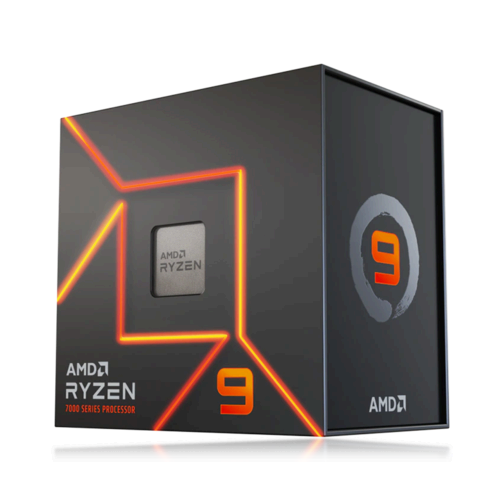

AMD Ryzen 9 7950X
Best AMD CPU Overall
$517 $699 Save $182
A superb choice for gamers and professionals, the AMD Ryzen 9 7950X justifies its flagship status. Its 16-core design is coupled with impressive power efficiency and surprisingly lightweight cooling requirements.
|
Pros |
Cons |
|---|---|
|
✓ Best CPU you can get for $100 or less |
✗ Not the greatest long-term choice for gaming |
|
✓ Decent gaming performance |
✗ Not for gamers who multitask |
|
✓ Cool, quiet, and admirably power efficient |
|
|
✓ Comes with a pretty good box cooler |
The Intel Core i3-12100F is the best CPU you can get for $100 or less, period. This Intel CPU is a four-core processor, but its four cores are fast and are enough to run even the most demanding AAA games at 60fps.
Multiplayer games will work at triple-digit frame rates without issues—provided your GPU can handle it. This CPU is also very power efficient, and the included box cooler is enough to cool it down, meaning extra savings since you won’t have to get an aftermarket CPU cooler.
Regarding cons, the Core i3-12100F isn’t the most future-proof choice. Its four-core/eight-thread design can run current AAA titles at 60fps, but future AAA games might struggle to run at or above 60 frames per second. Also, if you have a multi-monitor setup and like having YouTube or Twitch running in the background while gaming, the four cores inside the 12100F won’t be enough to provide a stutter-free gaming experience in some CPU-heavy titles.
If you can’t spend more than $100 on the CPU, get the Core i3-12100F—the F label on Intel CPUs means lack of an integrated graphics card (iGPU) solution, which is fine for gamers, since they’ll get a dedicated GPU anyway. If you don’t need a dedicated GPU and are fine with an iGPU, you can get the Core i3-12100.
Gamers who multitask and those with a higher budget looking for something more powerful should check the six-core Intel Core i5-12400F or its 12400 variant with an iGPU. The Core i5-12400F is a great gaming CPU with enough performance for years to come. It offers a considerable performance bump over the 12100F, while costing only about $150.
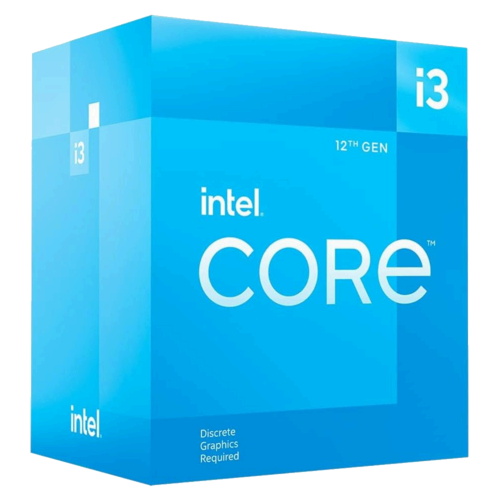

Intel Core I3-12100F
Best Budget Intel CPU
The Intel Core I3-12100F is an amazing CPU for $100 or less. It’s perfect for any home PC and more than a decent choice for an entry-level gaming PC.
|
Pros |
Cons |
|---|---|
|
✓ Cool and quiet |
✗ Not the best option for gamers on a budget |
|
✓ Comes with a serviceable box cooler |
✗ Only 16MB of cache and limited to PCIe 3.0 |
|
✓ Can be paired with an affordable AM4 motherboard |
✗ No integrated graphics |
|
✓ Excellent multithreaded performance for a budget CPU |
|
|
✓ Affordable |
You can find the AMD Ryzen 5 5500 retails for $159, but it often goes on sale for less than $100. At that price point, it is a striking choice for budget PC builders. Especially because you can pair the CPU with a decent AM4 motherboard, like the ASRock B550M Pro SE for about $85. Add a budget 16GB DDR4 3200 MT/s memory kit such as the Elite 16GB kit from TEAMGROUP, and the final price for the combo should be somewhere around $210.
Overall, the AMD Ryzen 5 5500 performs well for heavy multithreaded workloads. You shouldn’t expect miracles from its six cores, but you can expect noticeably higher performance compared to Intel’s Core i3-12100F and Core i3-13100F CPUs, both of which are priced similarly to the Ryzen 5 5500.
If you’re a gamer on a budget, however, we advise getting one of the aforementioned Intel CPUs or aiming for the AMD Ryzen 5 5600. AMD chose to cut the Ryzen 5500’s cache in half, from 32MB to 16MB, as well as limit the CPU to PCIe 3.0 instead of PCIe 4.0, in contrast to the Ryzen 5 5600. These cutbacks have led to noticeably weaker gaming performance when pitted against the Ryzen 5 5600 or the two budget Core i3 CPUs from Intel.
Aside from 16MB of cache and a lack of PCIe 4.0 support, the Ryzen 5 5500 also doesn’t include integrated graphics, making it a less appealing option for a budget office or media PC than, fof instance, the Intel Core i3-12100, which comes with an iGPU and costs around $20 more.
Lastly, note that the Ryzen 5 5500 is based on the older AM4 CPU socket, which is a bummer since you won’t be able to upgrade to a newer Ryzen CPU in the future. If you’re on a budget but want to future-proof your PC, get the AM5-based AMD Ryzen 5 7600. It’s much pricier than the 5500 at about $200 and requires more expensive DDR5 RAM, but the Ryzen 7600 is much faster in games and more power-efficient.
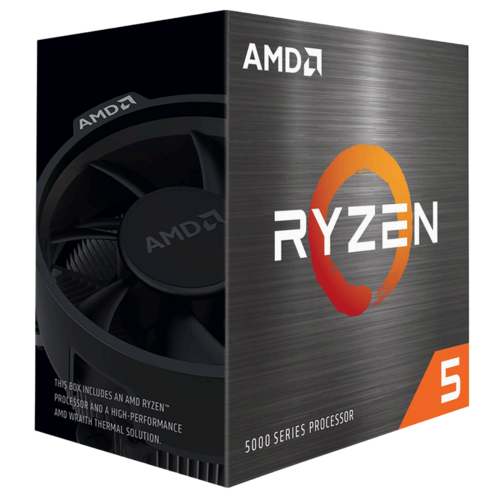

AMD Ryzen 5 5500
Best Budget Ryzen CPU
$98 $159 Save $61
The best budget Ryzen CPU you can get is the AMD Ryzen 5 5500. Its multithreaded performance won’t impress anyone, and its gaming performance leaves something to be desired. However, for the price, it’s more than a decent performer.
|
Pros |
Cons |
|---|---|
|
✓ Best gaming CPU on the market, period |
✗ Not the greatest choice for multithreaded workloads |
|
✓ Impressive power efficiency |
|
|
✓ Easier to cool than most other Ryzen 7000 CPUs |
|
|
✓ More affordable than flagship gaming options from AMD and Intel |
|
|
✓ Tons of cache |
The AMD Ryzen 7 7800X3D is the best gaming CPU on the market. The 7800X3D is faster than more expensive offerings from AMD and Intel—including the 13900K, the 13900KS, the 7950X, and the 7950X3D—while costing only $450.
The secret sauce inside this eight-core CPU is 96MB of L3 cache, placed on top of the chiplet containing the eight CPU cores thanks to AMD’s 3D V-cache technology—3D V-cache is a tech that allows AMD to place extra cache above the CPU die. Games love when a CPU has loads of cache memory, and the 7800X3D packs tons of it.
The CPU is also extremely power efficient and much easier to cool down than the flagship beasts from Intel and AMD, allowing you to save extra on the since a quality mid-range CPU cooler will do the job.
The 7800X3D isn’t the only Ryzen CPU with AMD’s 3D V-cache solution. You also have the Ryzen 9 7950X3D and the Ryzen 9 7900X3D. Those two, however, cost much more than the 7800X3D while being slightly slower in games, which is why we don’t recommend them over the 7800X3D.
If you’re looking for the best gaming performance in an Intel CPU, the Core i9-13900KS, a version of the 13900K with higher boost clocks and a higher price, is technically the fastest gaming CPU Intel offers. If you ask us, the Core i7-13700K, even the Core i5-13600K, are much better choices since they cost a lot less while having almost the same gaming performance as the 13900KS and being much easier to cool down.
If you’re still rocking a motherboard with the AM4 CPU socket and are considering upgrading to a faster gaming CPU, don’t jump on the 7800X3D bandwagon immediately. The Ryzen 7 5800X3D, the first CPU featuring the 3D V-cache tech, offers similar performance as the Ryzen 7000 and Intel 13th-gen CPUs while costing only about $300 and not requiring a new motherboard and DDR5 memory.
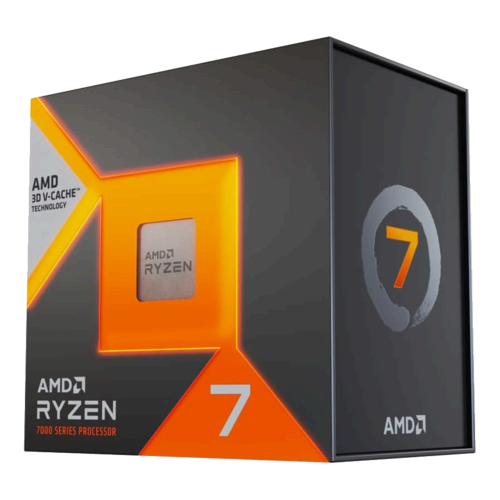

AMD Ryzen 7 7800X3D
Best CPU for Gaming
$386 $449 Save $63
If you’re a gamer and want the fastest gaming CPU on the market, get the Ryzen 7 7800X3D, you won’t regret it. Those in need of a CPU for productivity workloads should look elsewhere.
FAQ
What does CPU stand for?
CPU stands for Central Processing Unit. It is the primary component of a computer responsible for executing instructions and performing calculations.
Can I place any CPU in any motherboard?
No, you cannot place any CPU in any motherboard. The motherboard must have a compatible CPU socket and chipset for the CPU you plan on using. It is important to ensure compatibility between the CPU and motherboard before making a purchase.
How do I check my CPU temperature?
There are several ways to check your CPU temperature. One way is to enter your computer’s BIOS, where the CPU temperature is usually displayed on the BIOS home page. Another way is to use third-party monitoring tools such as Core Temp or HWiNFO. These tools allow you to monitor the CPU temperature and other system thermals. Make sure to refer to the respective guides for more detailed instructions on monitoring your CPU temperature.
What is a CPU core?
A CPU core is a part of the CPU that performs the majority of the processing tasks. Modern consumer-grade CPUs can have multiple CPU cores, ranging from 2 to 24 cores. Each core can independently execute instructions and perform calculations. In the past, CPUs typically had only a single core, where the entire CPU functioned as a single processing unit.
How do I clean thermal paste off my CPU?
Cleaning thermal paste off a CPU is a straightforward process. After removing the cooler heatsink or cold plate, use a cotton pad or paper towel to clean off the thermal paste. If the paste has hardened, you can use a cotton swab or pad with isopropyl alcohol to soften and scrape off the paste. It’s important to be gentle and avoid damaging the CPU or socket during the cleaning process.
